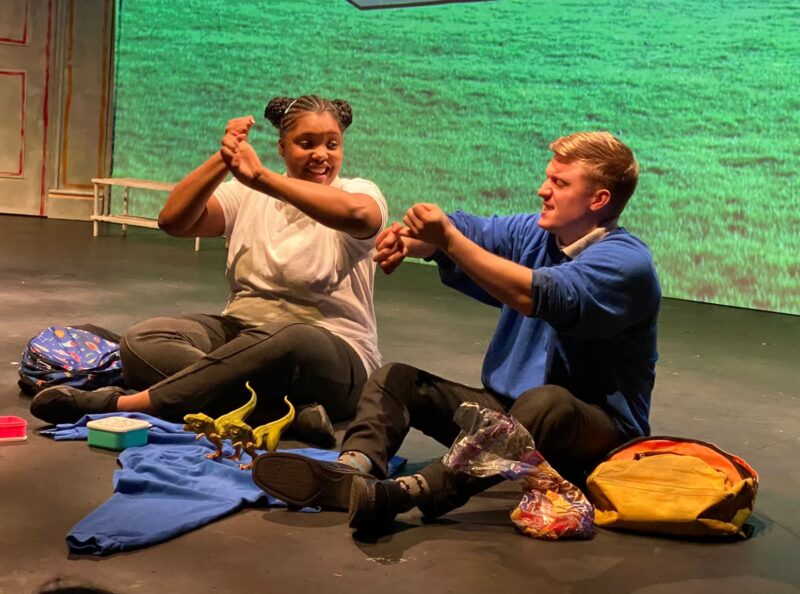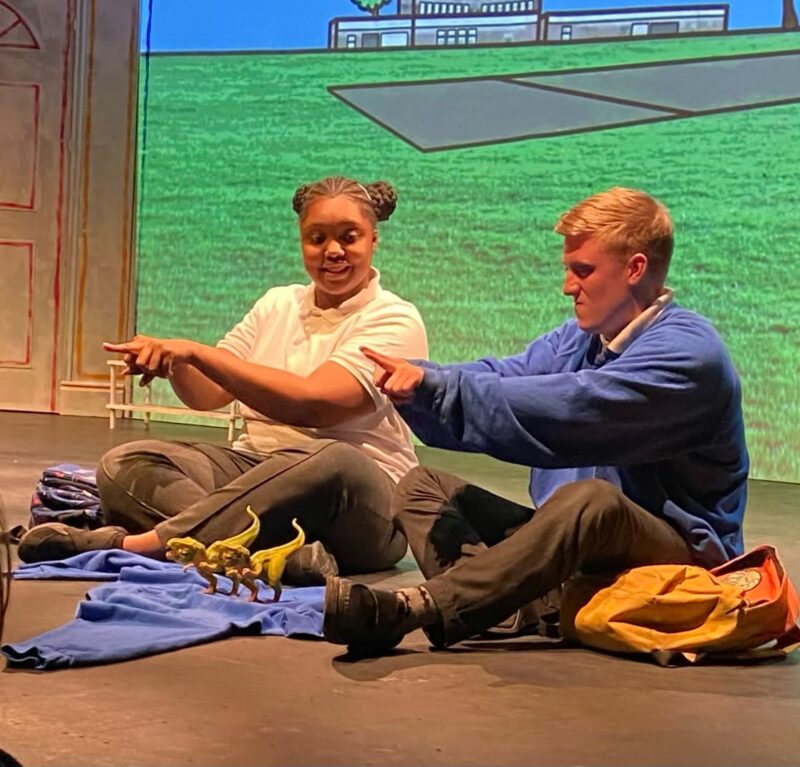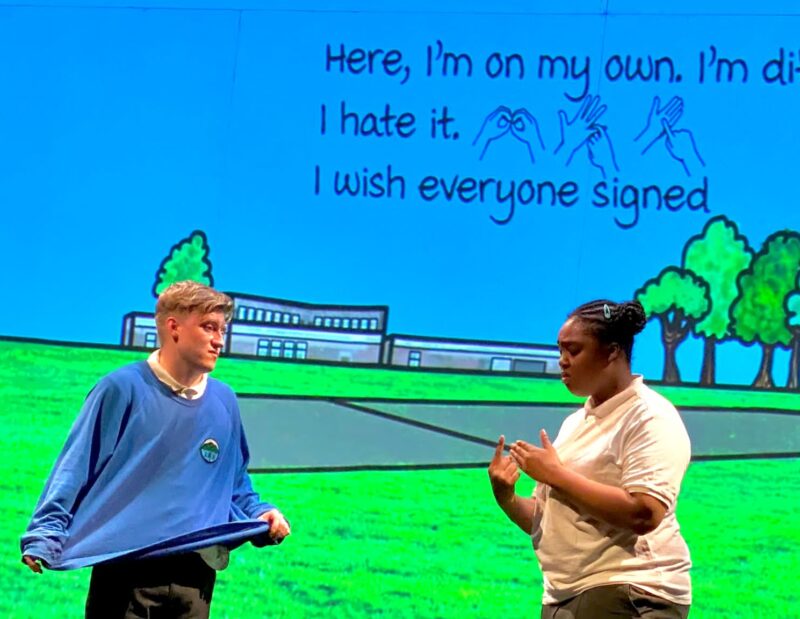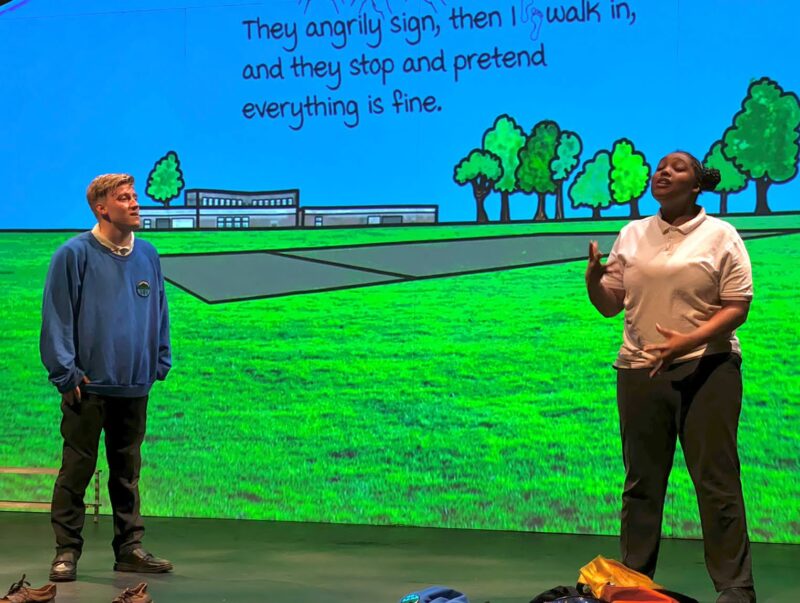


BSL stands for British Sign Language and we use this language in theatres to make theatre performance accessible to deaf audiences. My role is to work alongside directors, actors and other creatives, to ensure that their productions are properly accessible to deaf audiences. The elements of access that we assess are:
BSL – working with deaf and BSL actors closely and giving them support on their understanding of their storytelling through BSL.
TRANSLATION – if actors are using the right translation and context in telling the story through BSL.
EXPRESSION – the use of facial expression & visual body language through relationships between characters.
SUBTITLES – if subtitles are in the right font, size and where they should be best placed on set for the audience’s perspective. Also check the speed of the spoken lines to make sure they match the subtitles in time.


LIGHTING – check the set lighting as we need to make sure there are no shadows on the actors that can blur or darken the hands whilst performing.
COSTUME – check if the costumes are the right fit for BSL performers such as it’s block colour not patterned or bright neon colours as it would hurt our eyes. Making sure that their hands and forearms of BSL performers are clear from any materials that could affect their signing.
SOUND LEVELS – Check sound levels and vibration levels to ensure that audiences get the balance of having both for both deaf and hearing audiences.
BSL Consultants ensure that the two languages in a show – BSL and English – are properly integrated into the performance – thereby bringing a whole new level of accessibility to the performance for all members of an audience – hearing and deaf.
In my experience as a deaf person, having an interpreter on the side of the stage, signing, really doesn’t work. As soon as I look over to the interpreter to try and understand something, something else happens on stage and I miss it! Not only that, watching the story told through an interpreter is not the same as watching the characters themselves communicate a story. Interpreters don’t show the same emotion or characteristics, so making me feel disconnected from the performance.
To have BSL integrated, it gives more layers to the characters and the storytelling and this way it’s so much more visual for both audiences. It means we can include the deaf audiences and connect to them so much more effectively. We’ve had comments from deaf audiences telling us how much they loved the story and how they are so happy to be able to just come to a theatre, not feel left out and so involved in completely understanding the whole show!
This I can relate to. It’s funny that we have also had comments in the past from hearing audiences who really love the integration of the two languages. ‘I didn’t realise how visual sign language is, it just brings the story to life as if we were there with them because we are so used to just listening and hearing, rather than using our eyes and our imagination to connect with the story deeply!’
If you were to employ a BSL consultant, they must be Deaf as we are the ones with the knowledge of our rich deaf culture and background. When reaching out, it’s important to provide a clear project proposal, and most importantly to send the script in advance. This is essential for the translation process, and to help us to understand and have a proper overview of the project.


A BSL consultant is very useful to have in the room with you when auditioning deaf actors, as they can provide invaluable support to those making decisions on BSL integration. This applies to auditions of both deaf and hearing actors if you are considering them working together in a show. Be aware that when making a schedule sufficient time should be allowed for translations, as actors need this early in the process. This is so the BSL and spoken language are in sync during rehearsals.
Hope this is helpful. Thanks so much for reading!
Raphaella
Raphaella Julien is fluent in BSL and SSE and a skilled mime and physical theatre performer. She won the Best Actress Award for her role in Lost, Taken, Murdered at #Deaffest 2022. Her theatre credits include: Follow the Signs, Stig of the Dump, Emperor’s New Clothes and The Survivors Guide to Living.